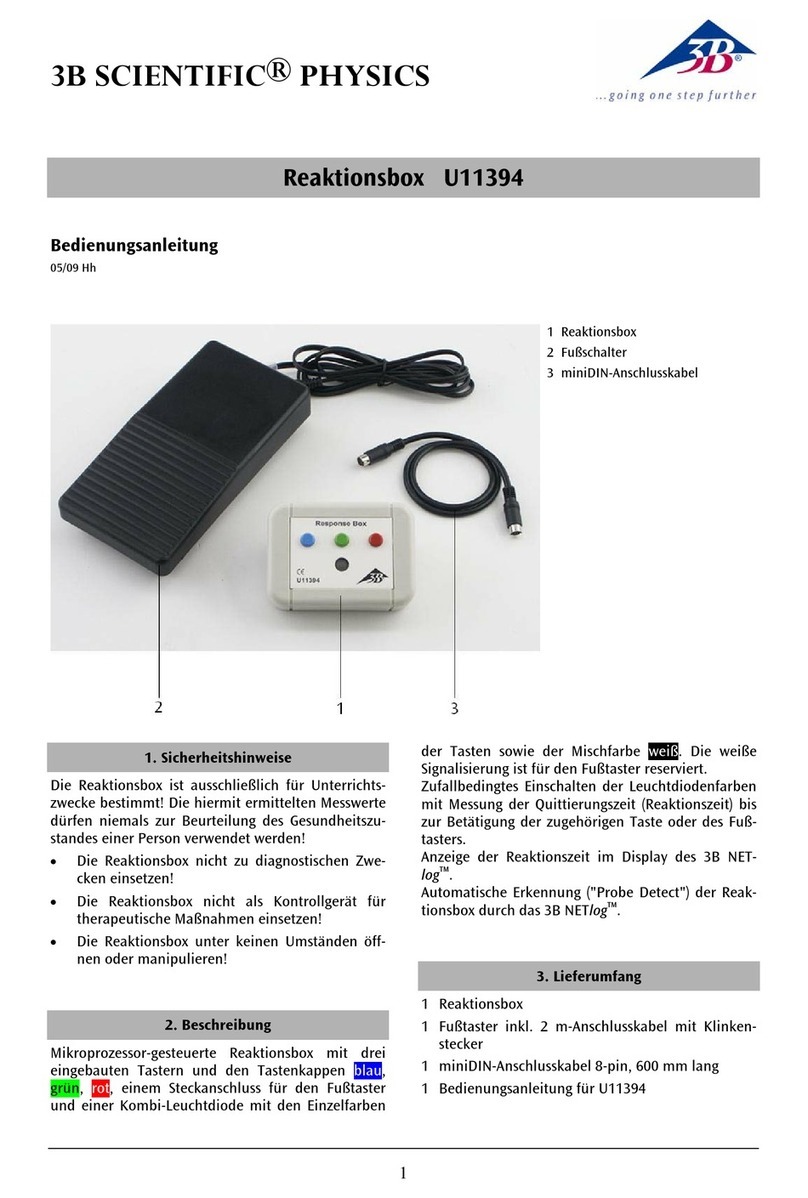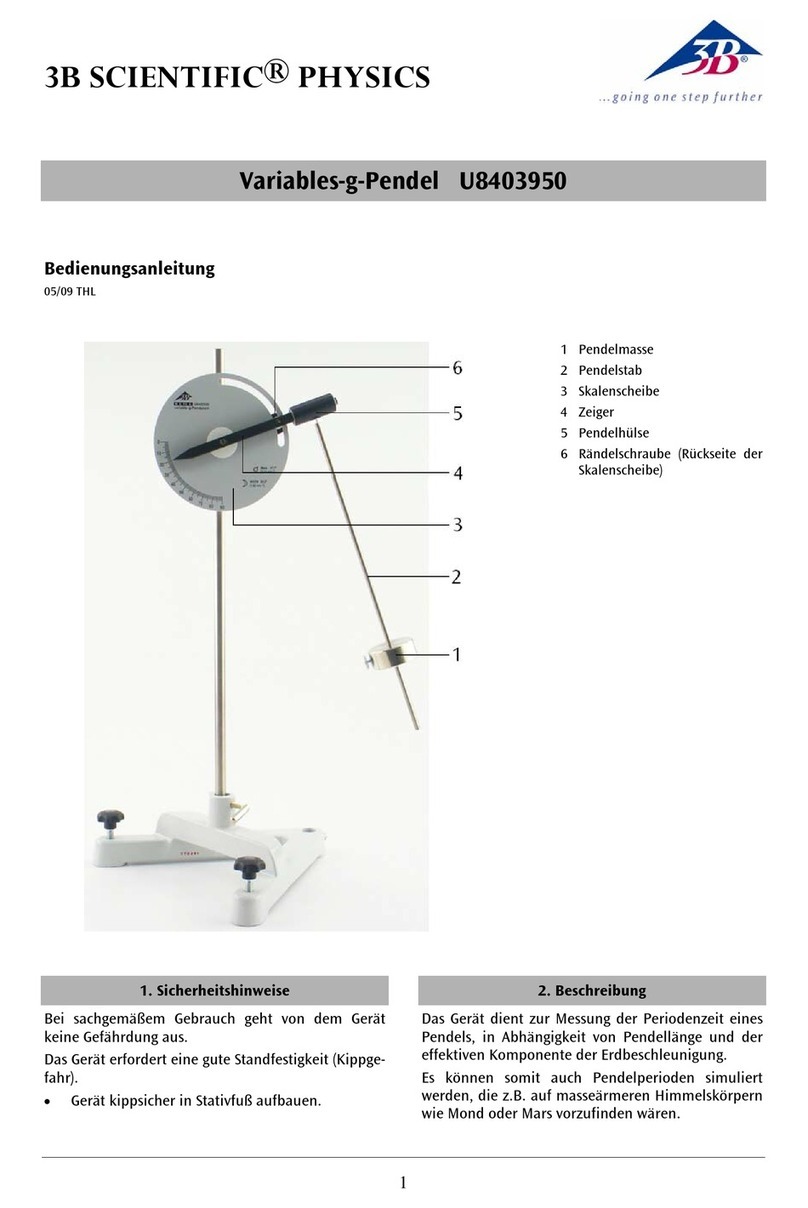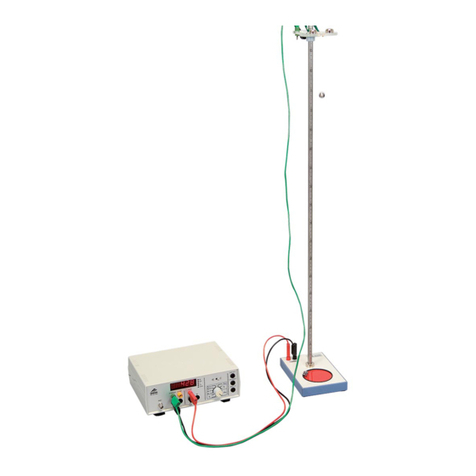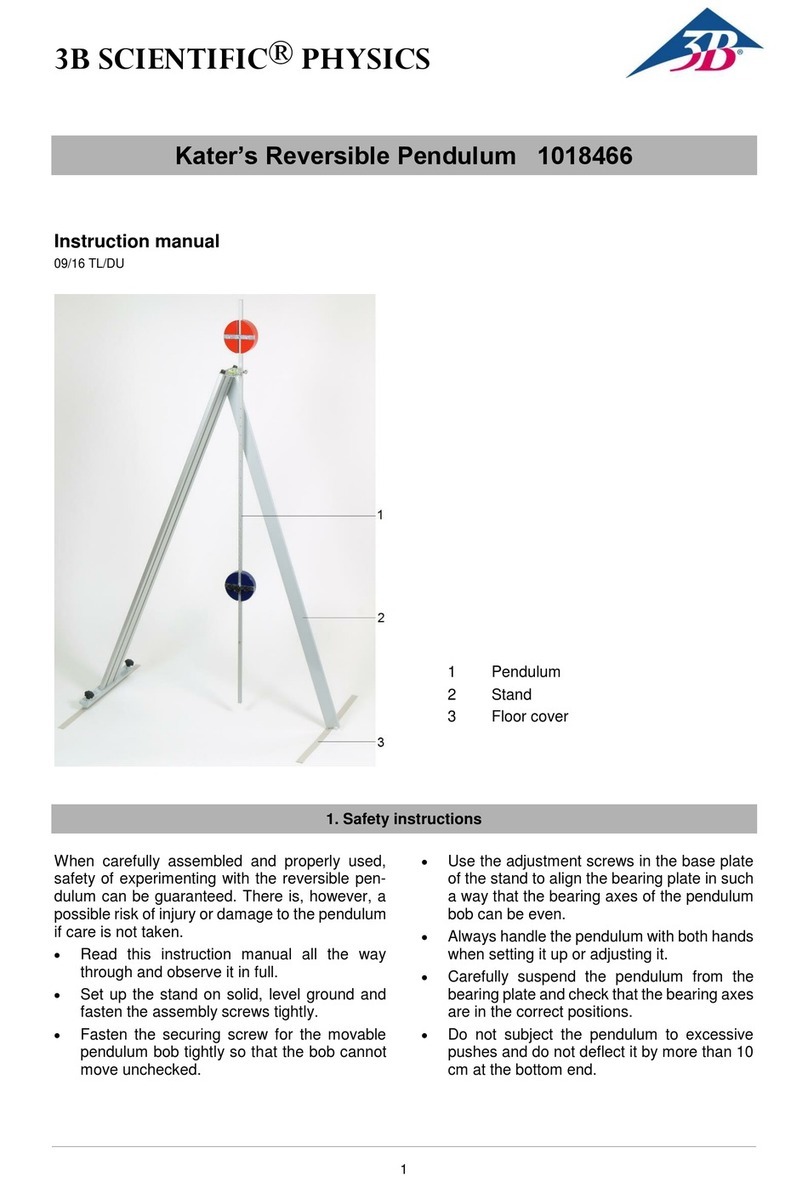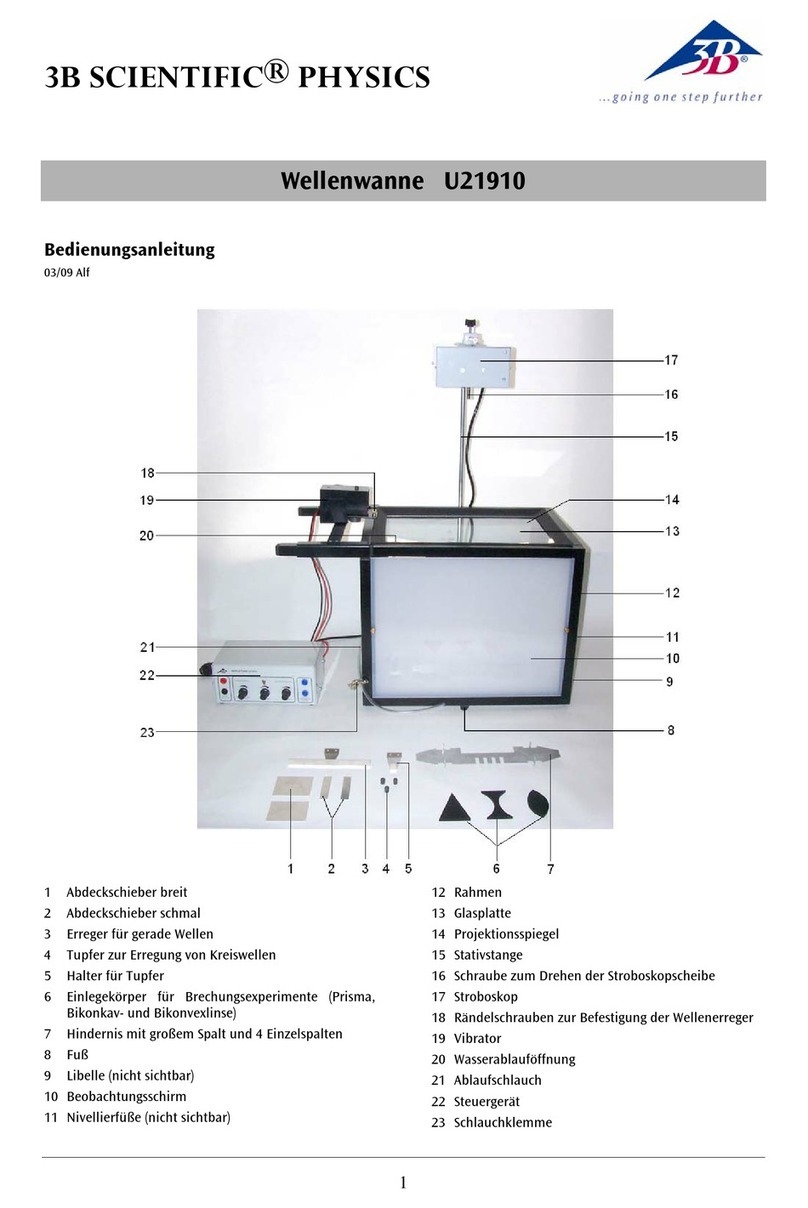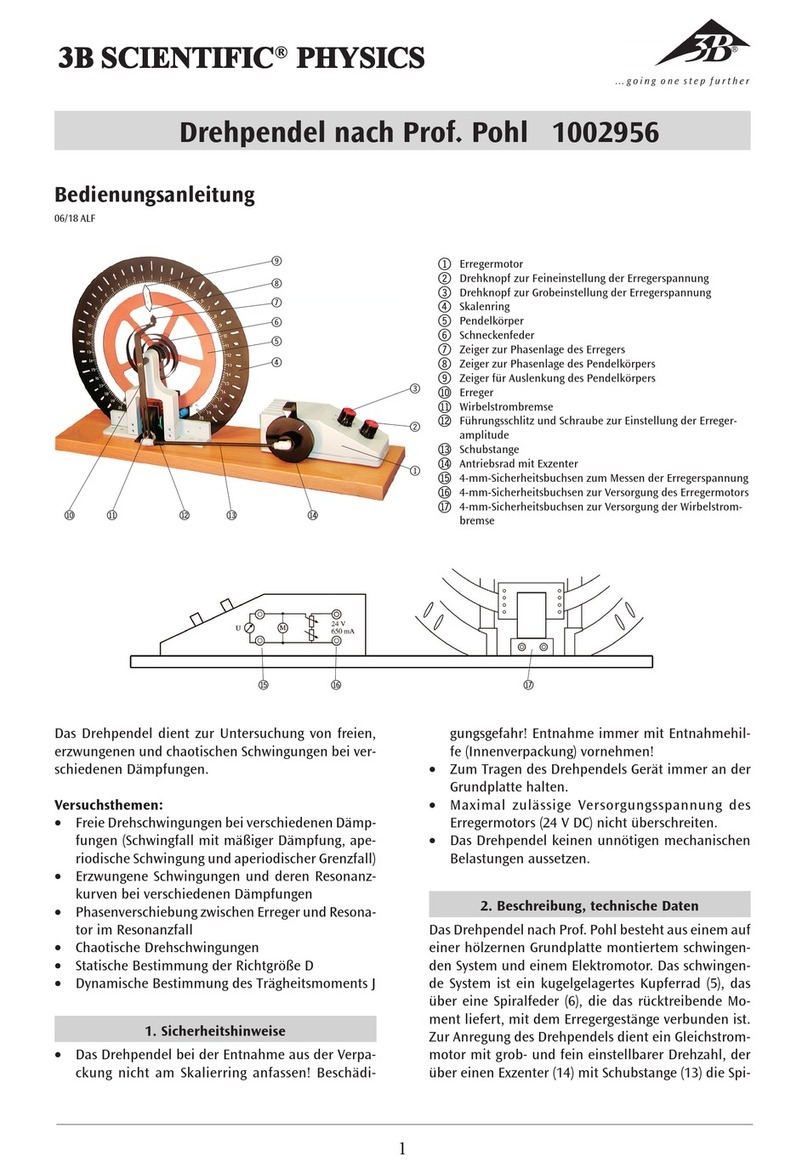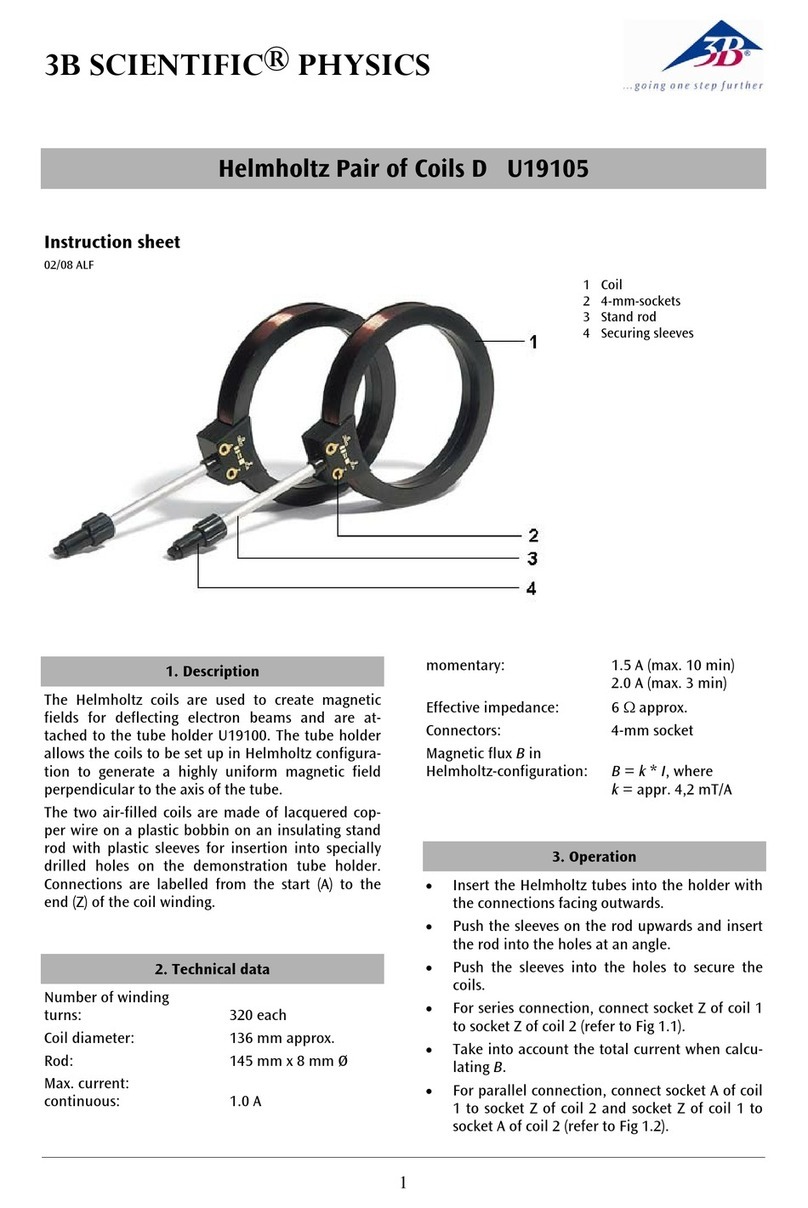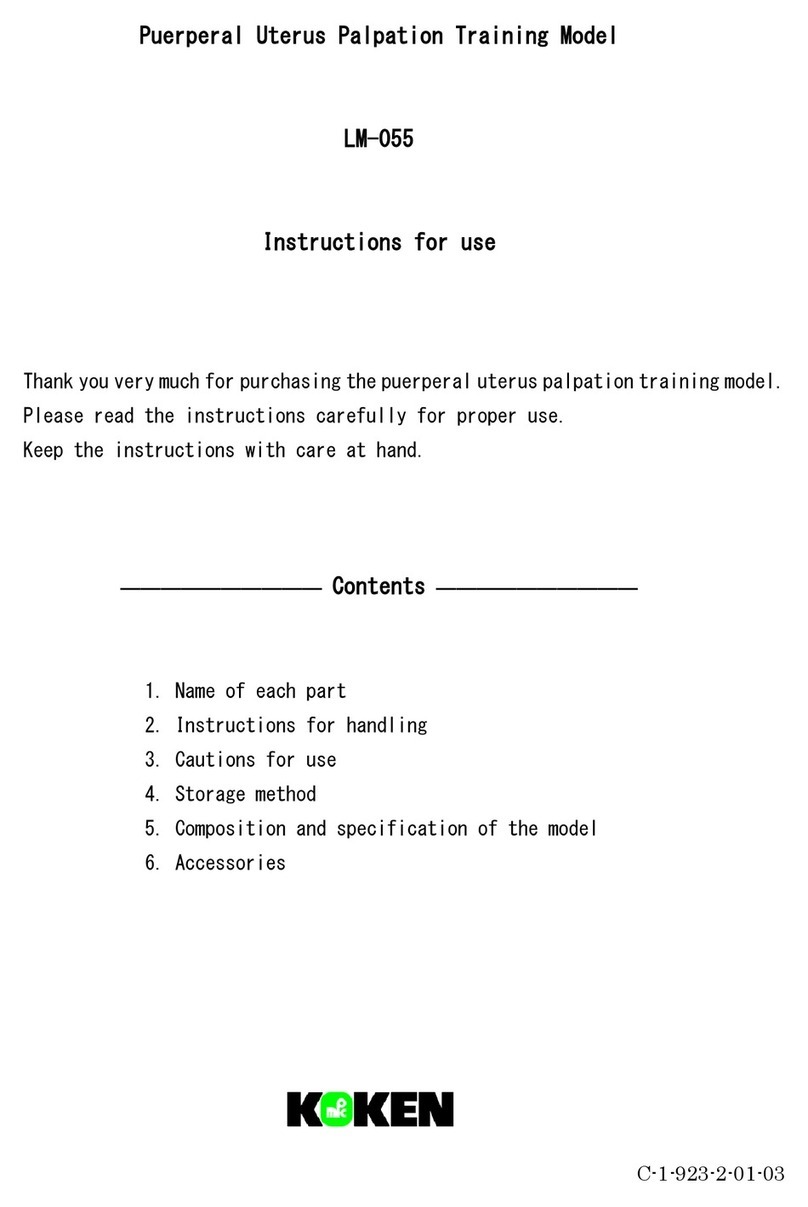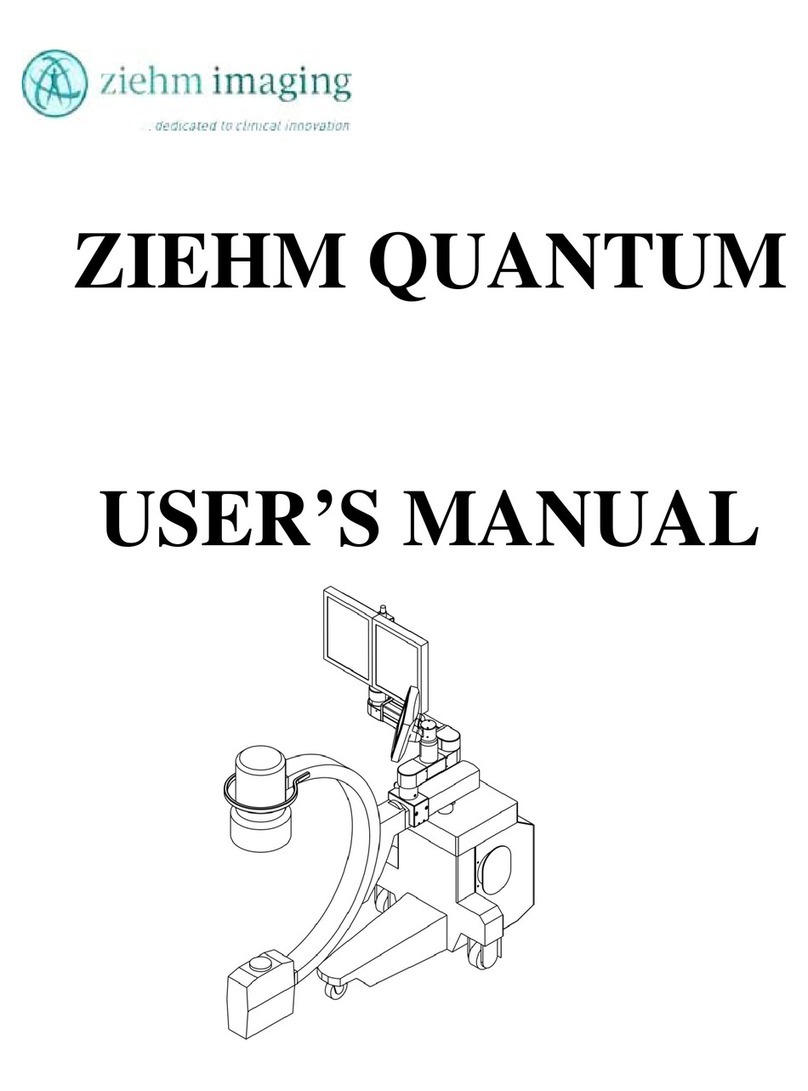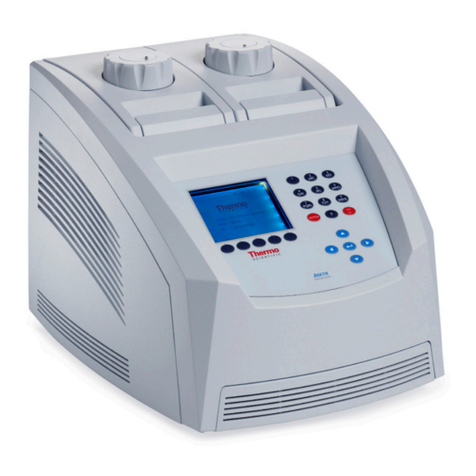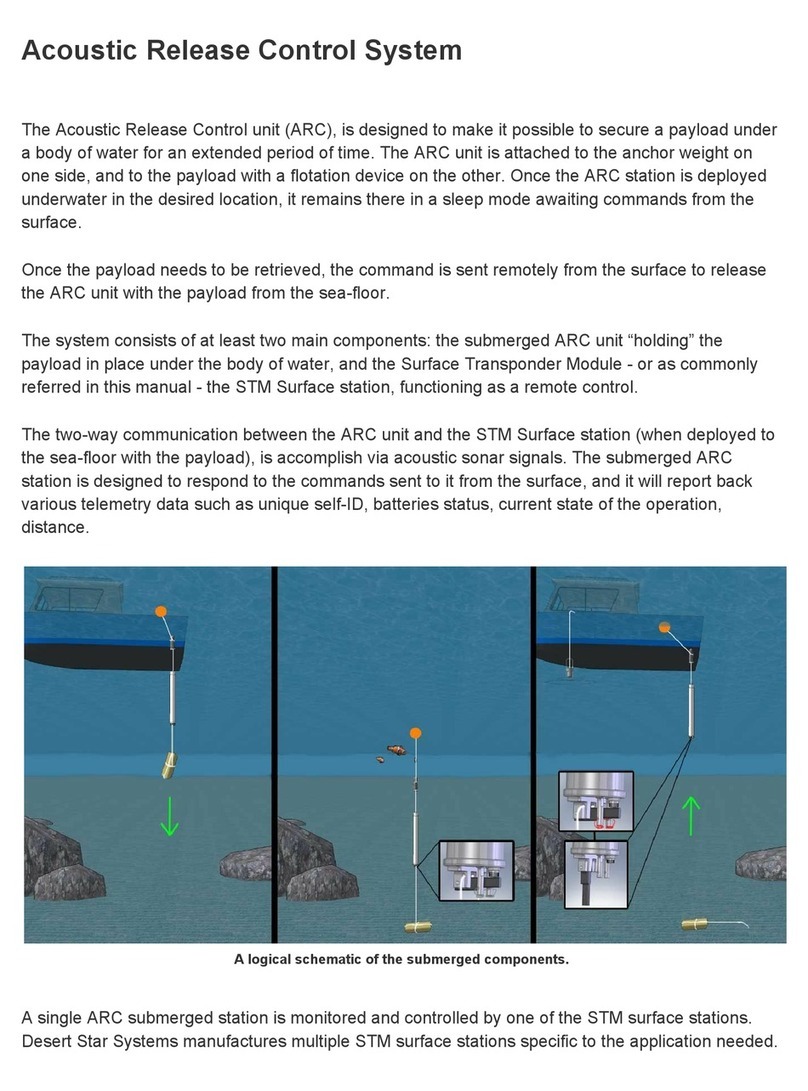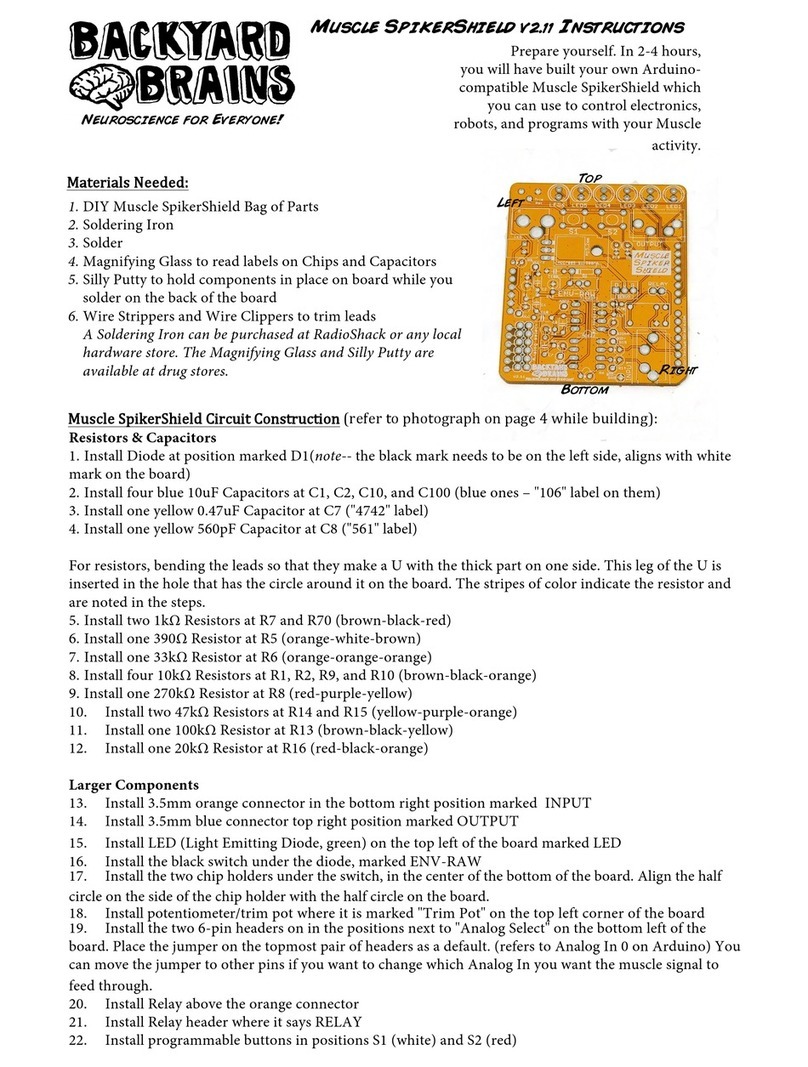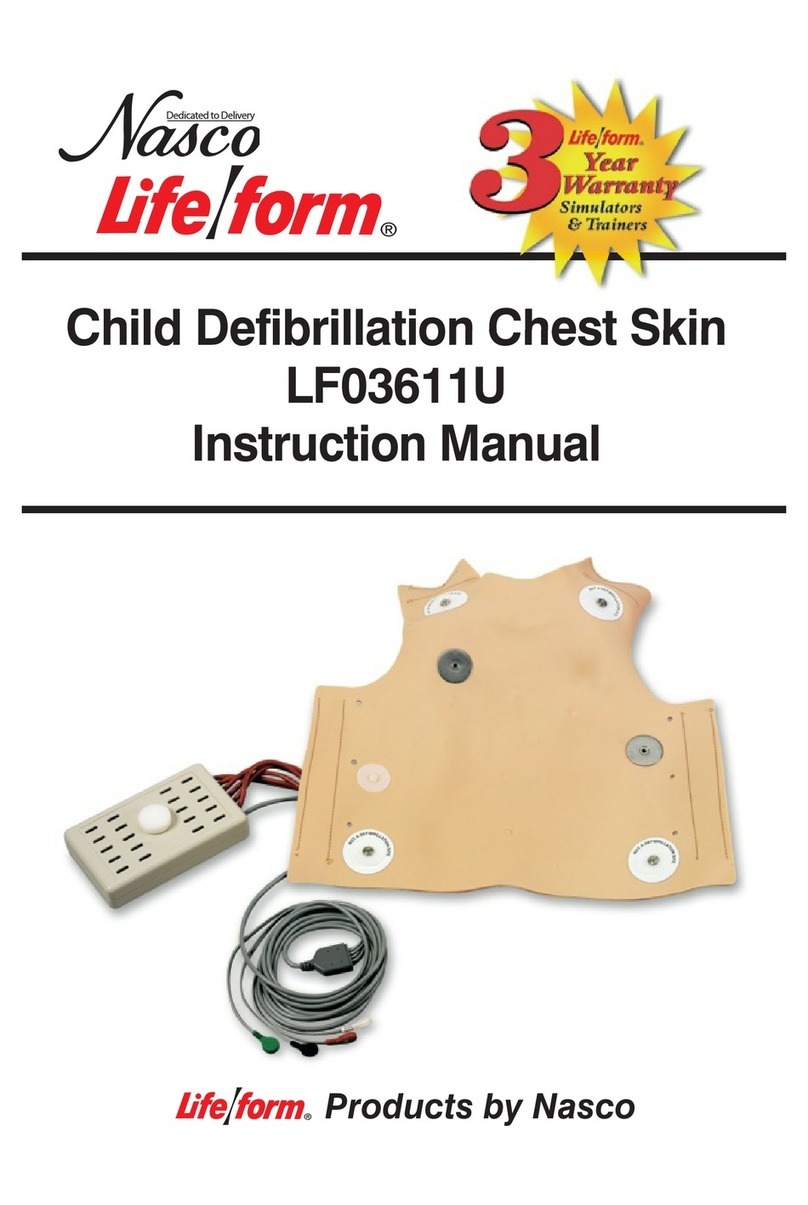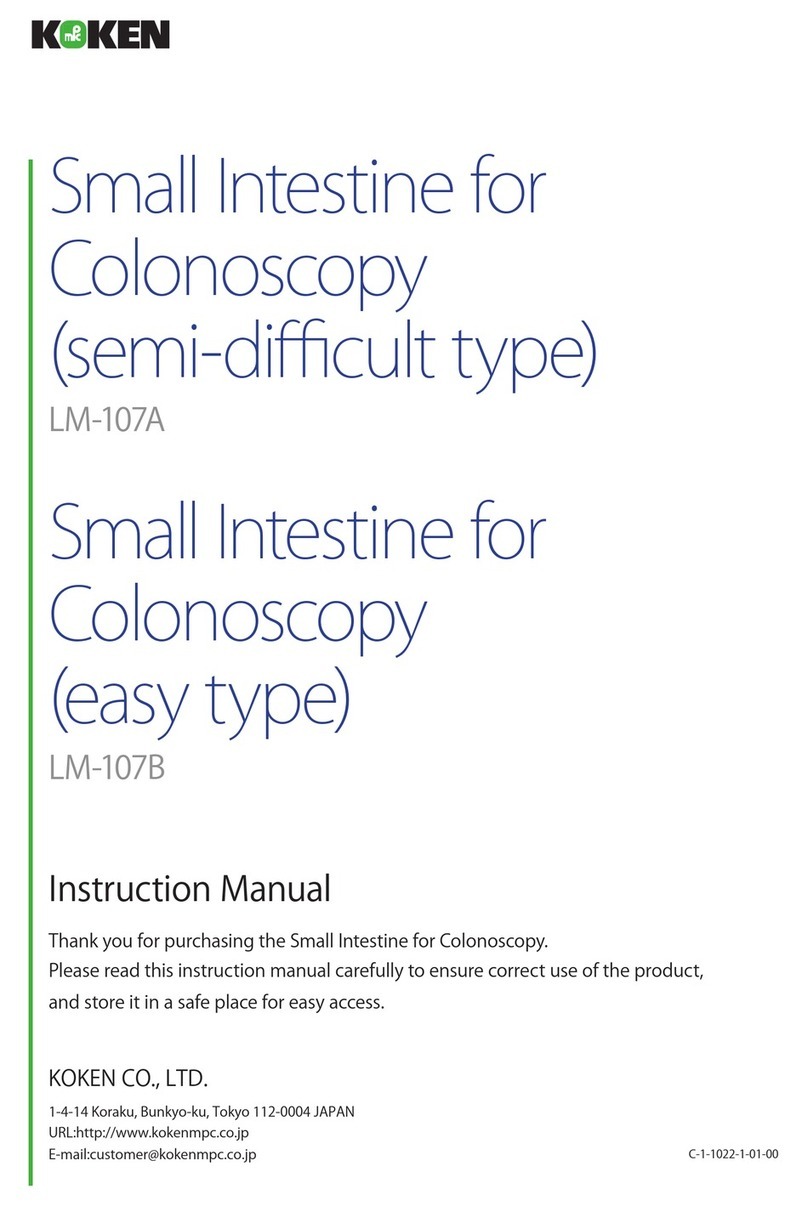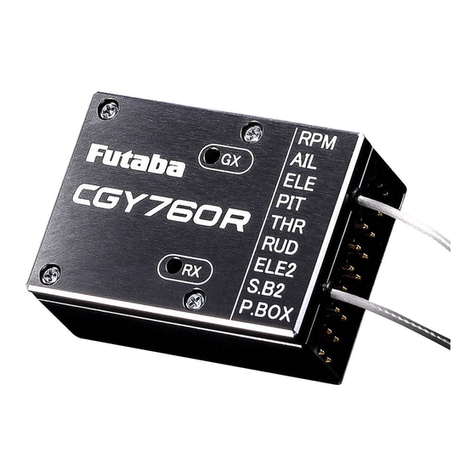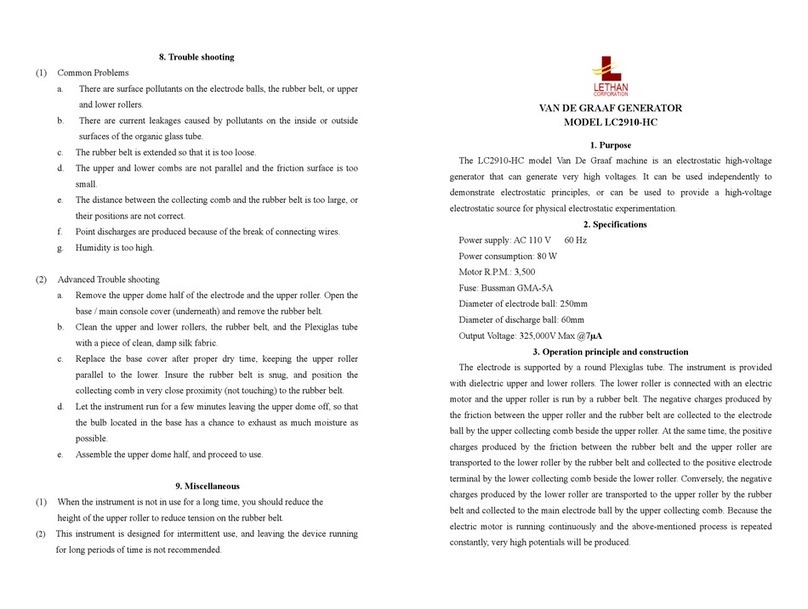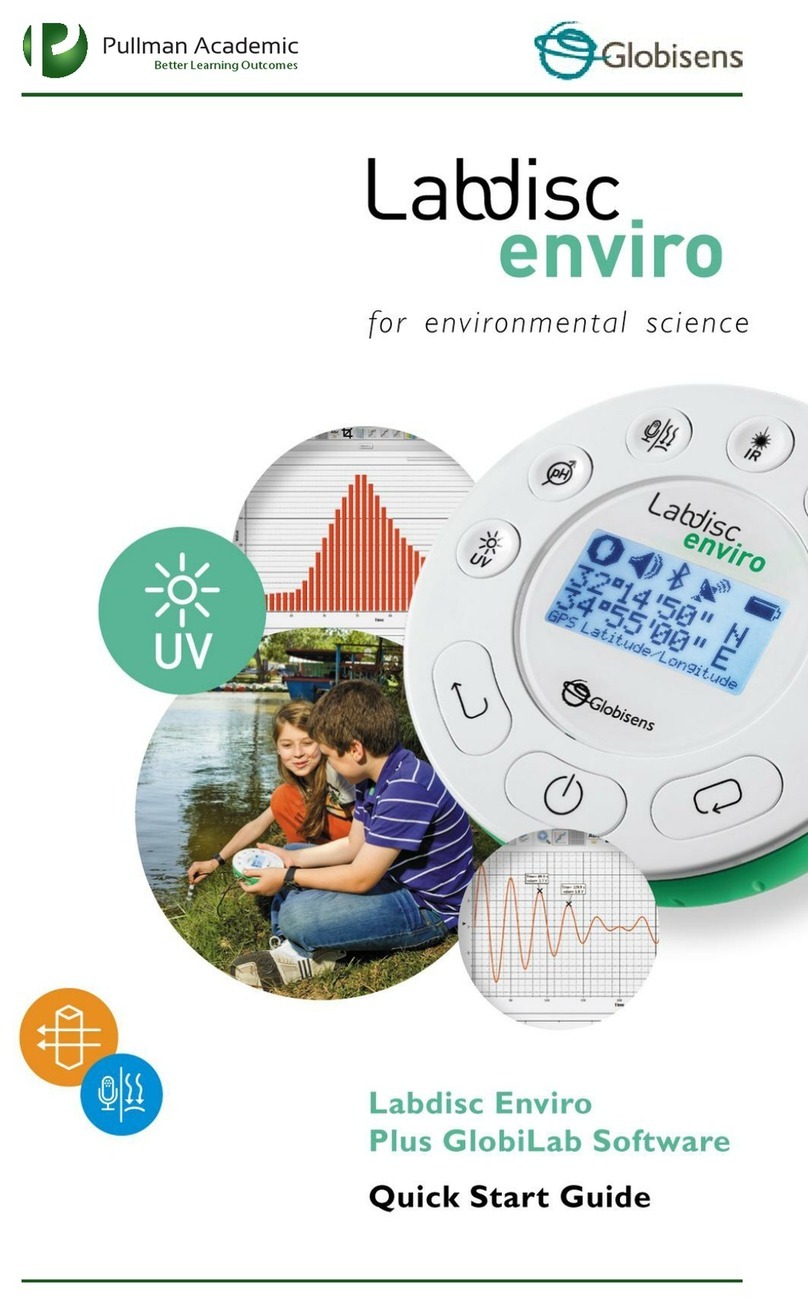
7
unwinds the coil spring then compresses it again in a
periodic sequence and thereby initiates the oscillation
of
the
copper
wheel.
The
electromagnetic
eddy
cur-
rent
brake
(11)
is
used
for
damping.
A
scale
ring
(4)
with slots and a scale in 2-mm divisions extends over
the
outside
of
the
oscillating
system;
indicators
are
located on the exciter and resonator.
The device can also be used in shadow projection dem-
onstrations.
Natural frequency: 0.5 Hz approx.
0 to 1.3 Hz (continuously adjust-Exciter frequency:
able)
Terminals:
Motor: max. 24 V DC, 0.7 A,
via 4-mm safety sockets
Eddy current brake:
0 to 20 V DC, max. 2 A,
via 4-mm safety sockets
Scale ring: 300 mm Ø
400 mm x 140Dimensions: mm x 270 mm
4 kgGround:
2.1 Scope of supply
1 Torsional pendulum
2 Additional 10 g weights
2 Additional 20 g weights
3. Theoretical Fundamentals
3.1 Symbols used in the equations
Angular directional variableD =
Mass moment of inertia=J
Restoring torque=M
Period=T
T0Period of an undamped system=
TdPeriod of the damped system=
M
E
Amplitude of the exciter moment=
Damping torque=b
Frequency=n
Time=t
ΛLogarithmic decrement=
δDamping constant=
ϕ
Angle of deflection=
ϕ
0
Amplitude at time t = 0 s=
ϕ
n
Amplitude after n periods=
ϕ
E
Exciter amplitude=
ϕ
S
System amplitude=
ω0Natural frequency of the oscillating system=
ωdNatural frequency of the damped system=
ωEExciter angular frequency=
ωEres Exciter angular frequency for max. amplitude=
Ψ0S System zero phase angle=
3.2 Harmonic rotary oscillation
A harmonic oscillation is produced when the restoring
torque is proportional to the deflection. In the case of
harmonic rotary oscillations the restoring torque is
proportional to the deflection angle ϕ:
M = D ·
ϕ
The coefficient of proportionality D (angular direction
variable) can be computed by measuring the deflec-
tion angle and the deflection moment.
If the period duration T is measured, the natural reso-
nant frequency of the system ω0is given by
ω
0= 2
π
/T
and the mass moment of inertia J is given by
ω
0
2=D
J
3.3 Free damped rotary oscillations
An oscillating system that suffers energy loss due to
friction, without the loss of energy being compensated
for by any additional external source, experiences a
constant drop in amplitude, i.e. the oscillation is
damped.
At the same time the damping torque b is proportional
to the deflectional angle
ϕ
.
.
The following motion equation is obtained for the
torque at equilibrium
JbD⋅+⋅+⋅=
ϕϕϕ
.. .0
b = 0 for undamped oscillation.
If the oscillation begins with maximum amplitude
ϕ
0
at t = 0 s the resulting solution to the differential equa-
tion for light damping (δ² < ω0²) (oscillation) is as fol-
lows
ϕ
=
ϕ
0
· e–δ·t · cos (
ω
d· t)
δ= b/2 J is the damping constant and
ωωδ
d0
22
=−
the natural frequency of the damped system.
Under heavy damping (δ² > ω0²) the system does not
oscillate but moves directly into a state of rest or equi-
librium (non-oscillating case).
The period duration Tdof the lightly damped oscillat-
ing system varies only slightly from T0of the undamped
oscillating system if the damping is not excessive.
By inserting t= n· Tdinto the equation
ϕ
=
ϕ
0
· e–δ·t · cos (
ω
d· t)
and
ϕ
=
ϕ
n
for the amplitude after n periods we ob-
tain the following with the relationship
ω
d= 2
π
/Td
ϕ
ϕ
δ
n
0
d
=⋅
−⋅
eT
n
and thus from this the logarithmic decrement Λ:
Λ
=⋅ =⋅
=
δϕ
ϕ
ϕ
ϕ
TnInIn
d
n
0
n
n+1
1





